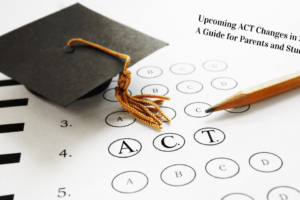
It Can Happen Here: Adolescents in Crisis and What We Can Do
 Recently in the county I live in, a high school junior shot himself to death in the parking lot of his church. It was revealed after the fact that he had suffered from a long history of depression. To be clear, I live in a pretty nice county: good schools, nice parks, every store you’d ever need, no major crime problems, no major issues. However, this young man is one of many. This young man suffered in silence maybe because it’s not accepted to be “weak” if you’re a young guy; maybe because he didn’t know where to turn; maybe because we as a society have been woefully inadequate at identifying young people in crisis and being able to keep them from taking drastic measures.
Recently in the county I live in, a high school junior shot himself to death in the parking lot of his church. It was revealed after the fact that he had suffered from a long history of depression. To be clear, I live in a pretty nice county: good schools, nice parks, every store you’d ever need, no major crime problems, no major issues. However, this young man is one of many. This young man suffered in silence maybe because it’s not accepted to be “weak” if you’re a young guy; maybe because he didn’t know where to turn; maybe because we as a society have been woefully inadequate at identifying young people in crisis and being able to keep them from taking drastic measures.
The pain adolescents may feel is very, very real. Unfortunately, our “suck it up” mentality does not leave much room for understanding, compassion, or patience. We are expected to “man up,” to “be strong,” and to not be “sissies.” In my decade of working with adolescents, I have seen far too many students with self-inflicted cuts on their arms, serious substance abuse problems, and even those who, like the young man mentioned above, have suicided. We’ve simply got to do a better job of recognizing adolescents in crisis and knowing what steps to take. Let’s keep in mind that:
It’s not always obvious: Unfortunately, depressed people don’t have tattoos announcing their depression. Similarly, adolescents often do not outwardly show signs of struggle. In fact, a large portion of students will practice “internalizing,” repressing their feelings and thus, becoming more prone to anxiety and depression. Others will “externalize,” turning their problems outward, which may, for instance, result in juvenile delinquency. In both cases, the root causes may be difficult for those of us on the outside to see. The internalizing adolescent may seem disinterested, even “lazy,” while the externalizing adolescent may simply be written off as a “bad kid.” I believe that, on the whole, we find it easier to label than we do to look for psychological or situational reasons for certain behaviors. The “bad kid” may be suffering abuse at home. The “lazy kid” may be in the throes of debilitating depression. To assume is to ignore actual problems that adolescents may be struggling with and thus, to be unable to address them in a positive way.
It can happen here, too: We have been lulled into the belief that in suburbia, nothing bad happens. Drugs are only in cities, for example. Where I live, in the overwhelmingly affluent suburbs, my county has one of the highest heroin overdose rates in the state. You’d never guess it judging only by our neat and clean appearance. The reality is that this stuff happens everywhere. When you think of MIT, for example, what comes to mind? Great school, smart kids, future engineers and scientists of America, right? Over the last decade, MIT has had a suicide rate of 12.5 per 100,000 students, well above the national average*. Why are these kids, these future powerhouses of America, taking themselves out? We can turn a blind eye all we want, focusing on the beautiful campuses and U.S. News and World Report rankings but, truthfully, without awareness and mental health initiatives, we will continue to lose students to depression, anxiety, substances, and even suicide at an alarming rate. And don’t for a second think it can’t happen here (wherever you are.)
Education isn’t just for students: I know you don’t want to hear this, but educators, administrators, legislators, and directors often think they know everything. And maybe you do know everything about grammar or factorials or the War of 1812 or your state’s educational policy, but what do you know about adolescent experience and psychology? It’s time we took a good, hard look at ourselves and ask what do we really know about being an adolescent in 2016? Do we really understand the humiliation that young people endure, the stresses, the identity confusion, the anxieties? Many adolescents simply cannot articulate the fact that they are in crisis. While this can lead to less dangerous results like acting out, it can undoubtedly lead to much more high-risk reactions like turning to drugs, self-harm, or suicide. It’s time for us—the establishment—to do something we hate doing: admit that we don’t have all the answers. If you’re a teacher who graduated from college thirty years ago, go take an adolescent psych class. If you’re new to the world of education, go volunteer at a teen crisis center. If you’re even peripherally involved with adolescents, read everything you can about adolescent mental health and be more than just a prop in a classroom. Learn everything you can about keeping our adolescents healthy in body, mind, and spirit.
*https://www.bostonglobe.com/metro/2015/03/16/suicide-rate-mit-higher-than-national-average/1aGWr7lRjiEyhoD1WIT78I/story.html
Written by Phil Lane



